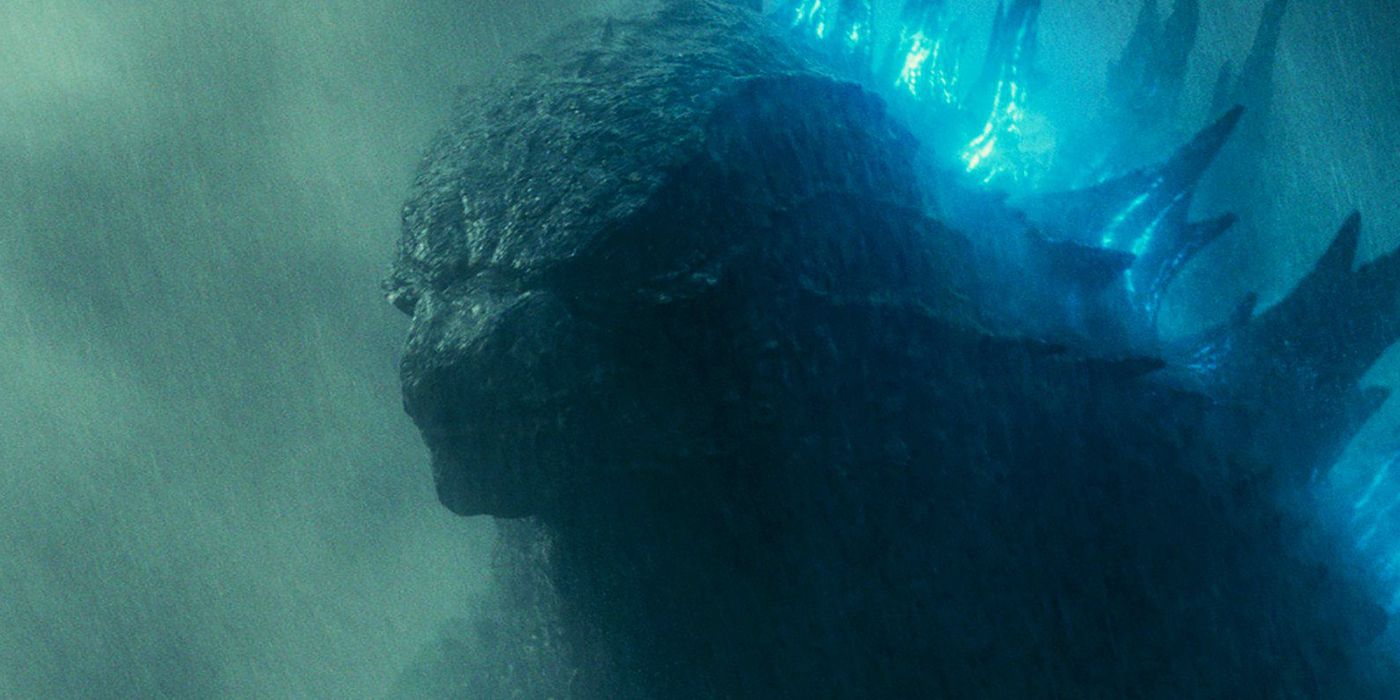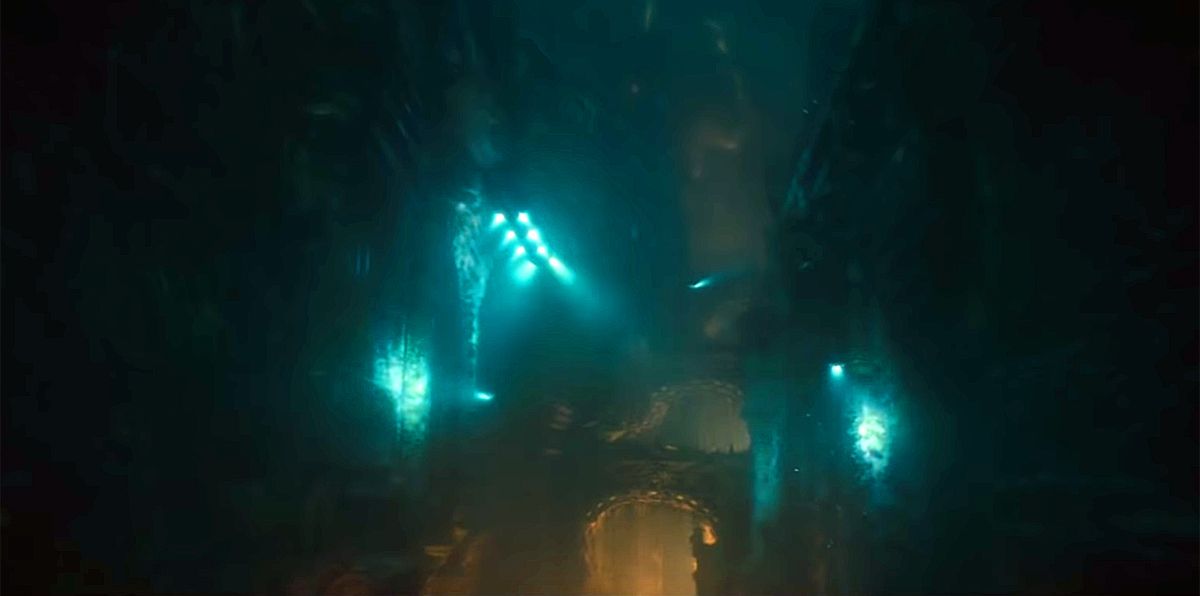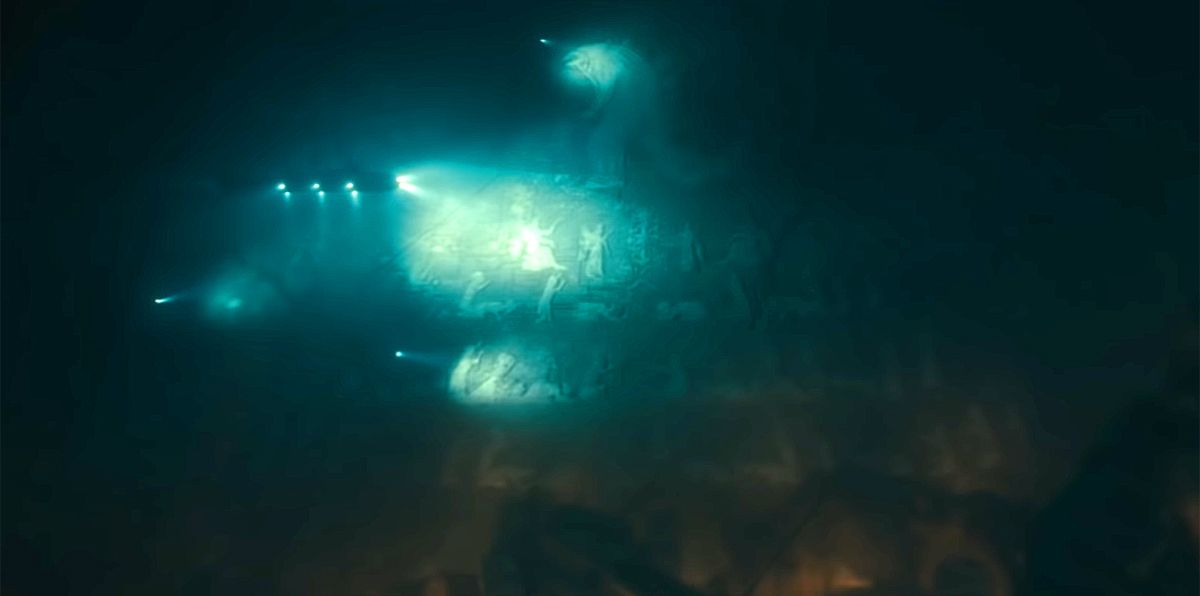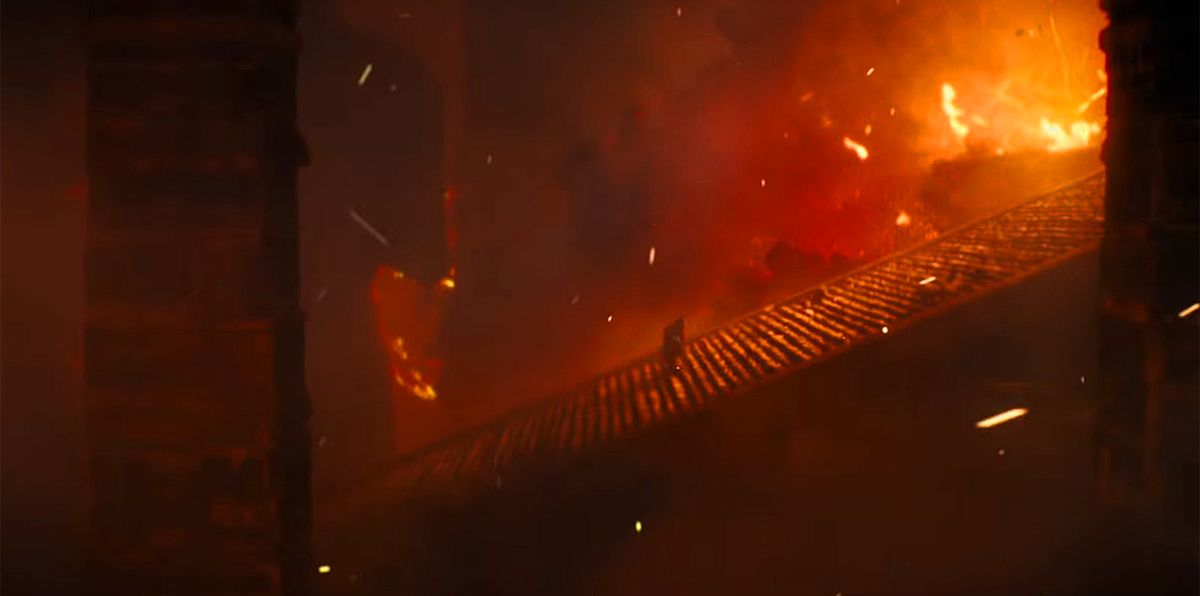WARNING: The following contains spoilers for Godzilla: King of the Monsters, in theaters now.
Godzilla is a prehistoric monster, known in Legendary's MonsterVerse as a Titan, reawakened by humanity's use of nuclear weaponry. The ancient beast and the other like him are revealed in Godzilla: King of the Monsters to have been viewed by early man gods. That gives the character a weight beyond his massive size. However, the film also ties Godzilla to another piece of mythology.
While searching for Godzilla's home, Monarch stumbles upon one of the greatest archeological discovery of all time: the ruins of what certainly appears to be the sunken city of Atlantis.
Way Down Below the Ocean
As the Titans begin to appear around the world following the awakening of King Ghidorah, Godzilla battles his ancient rival for dominance. Ghidorah heads to the Mexican city of Isla De Mona, where the fiery Rodan rises from a mountain. Swimming through the oceans, Godzilla arrives at the same location and duels Ghidorah. Although Godzilla gets the upper hand, both monsters are targeted by an experimental "oxygen bomb" that has potential to wipe out all life in the area. Although Ghidorah is relatively unharmed by the blast, Godzilla is seriously wounded, and forced to retreat back into the ocean.
While Monarch initially believes Godzilla was killed by the blast, it's later revealed the creature instead went to the bottom of the ocean to recuperate. The organization sends a team of scientists, including Godzilla's greatest advocate, Dr. Ishirō Serizawa (Ken Watanabe), and Titan expert Dr. Ilene Chen (Zhang Ziyi), in a submarine to search for the monster, with the hope of using a nuclear warhead to assist in his healing. Godzilla is finally discovered amid the underwater ruins of a lost civilization.
Godzilla's Ancient Stomping Grounds
The ruins are distinguishable by the stone columns and ancient carvings on the walls. Much of the art is in tribute to Godzilla, depicting him as a god-like figure. The scientist's comment that the ruins look to be thousands of years old, point point out the similarities to ancient Greek and Egyptian construction. The statues are classical, evoking ancient Greece and Rome.
The location is never named outright, but it's obvious what the filmmakers have in mind: Godzilla originates from Atlantis.
Although nuclear testing off the coast of Japan is heralded as the event that reawakened Godzilla, these undersea ruins are established as the place to which he would return in ancient times to heal and rest, when he roamed freely across the globe. The film even briefly mentions that Godzilla's own movements may have caused the earth to shift under the civilization, bringing it beneath the sea with him.
Monarch Nukes Atlantis
However, there's no time for scientists to dwell on what's most certainly one of the greatest discovery in history, as Monarch activates a nuclear warhead and destroys the ruins. It's for a good cause, to reinvigorate Godzilla, and ultimately overload him with the energy he needs to defeat Ghidorah. But there's no real acknowledgment of what was sacrificed to restore Godzilla. You'd expect at least Dr. Chen, with her belief that knowledge of ancient history and mythology is key to understanding the Titans, to be deeply affected by the obliteration of Atlantis.
Of course, everyone is upset by the loss of Dr. Serizawa, who sacrificed himself by detonating the nuke to give Godzilla, and by extension humanity, a fighting chance against Ghidorah.
Directed by Michael Dougherty, Godzilla: King of the Monsters stars Vera Farmiga, Ken Watanabe, Sally Hawkins, Kyle Chandler, Millie Bobby Brown, Bradley Whitford, Thomas Middleditch, Charles Dance, O’Shea Jackson Jr., Aisha Hinds and Zhang Ziyi.




